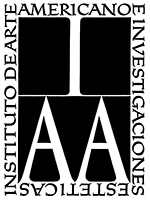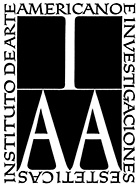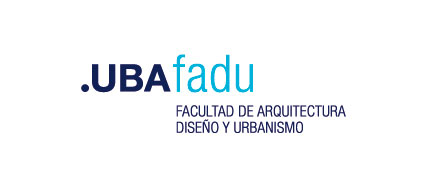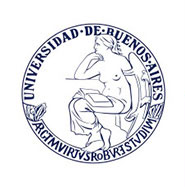Instituto de Arte Americano e
Investigaciones Estéticas
"Mario J. Buschiazzo"
Lugares de mal vivir: Una historia cultural de los prostíbulos de Buenos Aires; 1875-1936
Keywords:
Buenos Aires, history, culture, society, prostitutionSynopsis
From hearing her talk you would have gathered the impression that
Knype Hill with its thousand inhabitants held more of the refinements
of evil than Sodom, Gomorrah, and Buenos Aires put together.
George Orwell, A Clergyman’s Daughter, London, 1935.
When George Orwell wrote this passage he made it clear that in the middle 1930’s, the imaginary about the Argentine capital included the idea of a city whose immorality reached biblical dimensions. The claim of the English author was not an isolated fact. The dreadful reputation of Buenos Aires because of its "bad life" and its undergrounds was of such magnitude that, often, it surpassed the national limits to settle in the speeches of institutions and intellectuals of other latitudes. At that time, a cycle was closing for Buenos Aires. Along with a long period determined by the richness of its fields, its agricultural exports, its high bourgeoisie and the formidable immigration movements, also for several decades - at least since the late nineteenth century - a complex image had been constructed - and in a certain sense contradictory - of a decadent urban society, in a city immersed in a sweeping process of change. The whole picture - one of the strokes painted by Orwell - exhibited the nightlife of a city, sometimes as sordid as it was opulent, with an enormous amount of entertainment. A city where the white slave traffic was a crime of mass proportions and commerce with women "of life" could be found on every street, in all its neighborhoods, a city with amazing number of brothels. The object of study of this book is the brothel of Buenos Aires that, during the period of the tolerance that goes from 1875 to 1936, dispersed, mutated and reconfigured several times.
It is our intention to explain how and why this brothel, as one of the most emblematic spaces in the marginal universe of the city, paradoxically occupied a central place in the culture of those years. Based on this general presupposition, we formulate three particular and complementary hypotheses. In the first of them, the existence of a "moral medical" paradigm was affirmed that maintained prostitution - and its material expression, the “prostíbulo” - during the years of the regulation. As a set of socially accepted beliefs and values, recognized and constructed by an intellectual group, the notion of paradigm is functional to cultural studies, as a way of interpreting and associating an important group of factors acting on a particular society at a particular moment historical. The second hypothesis has to do with the idea of tolerance, as the most visible of the paradigm, recognize as a "pact" between society and local authorities, very different from the established notion of "legality" and with strong social implications, institutional and spatial. The third hypothesis arises precisely from the spatial location of brothely activities within the urban fabric. While it is observable the existence of a peripheral and marginal suburb, practically present from the origins of the very conformation of the city, we also propose to recognize the center as another underground, at the heart of the great political and administrative decisions of Buenos Aire .
Called "lupanares" in ancient Rome, "mancebías" in baroque Spain, "casas de asignación" in nineteenth-century Mexico, "cafés de camareras", "casas de tolerancia" or "quilombos" at the end of de Century in Buenos Aires, names which brothels have received throughout history have been changing and diverse. However, they were always denominations that condensed particular cultural dimensions and restored certain social and political situations that, as always, had their correlates in space practices. Prostitution was tolerated and regulated in the city of Buenos Aires for an uninterrupted period of sixty-one years, from the late Nineteenth Century until well into the third decade of the Twentieth Century. At this stage, brothels proliferated in various parts of the city. They mixed themselves between the houses and the shops of some neighborhoods, in places avoided (sometimes) by the look and the passage of the passers-by. But it is not possible to speak of a homogenous line regarding the development of the brothely environment, nor is it possible to speak in terms of the homogeneity of almost any aspect of Argentine urban life in those years. The city itself as whole experienced tremendous changes -which came from and in turn fueled to- a new culture, a heterogeneous society and a different politics. Between the last quarter of the Nineteenth Century and the first decades of the Twentieth Century, the demographic and spatial transformation of Buenos Aires was formidable. The population increased tenfold. The 230,000 inhabitants it had in about 1875 were more than 2,400,000 in 1936. During the period from 1871 to the beginning of World War I, about six million immigrants arrived in Argentina, in their vast majority of countries European countries. Something more than two-thirds settled definitively in the country. By 1914, more than 60% of the population of Buenos Aires was foreign. The process of territorial expansion and rapid population growth were unprecedented in South America and there were not many cases that could be compared in the Western Hemisphere. The city of the mid-thirties had little or nothing to do with that of the last quarter of the nineteenth century. Neither his society.
Downloads

Downloads
Published
Series
Online ISSN
License

This work is licensed under a Creative Commons Attribution-NonCommercial-ShareAlike 4.0 International License.









